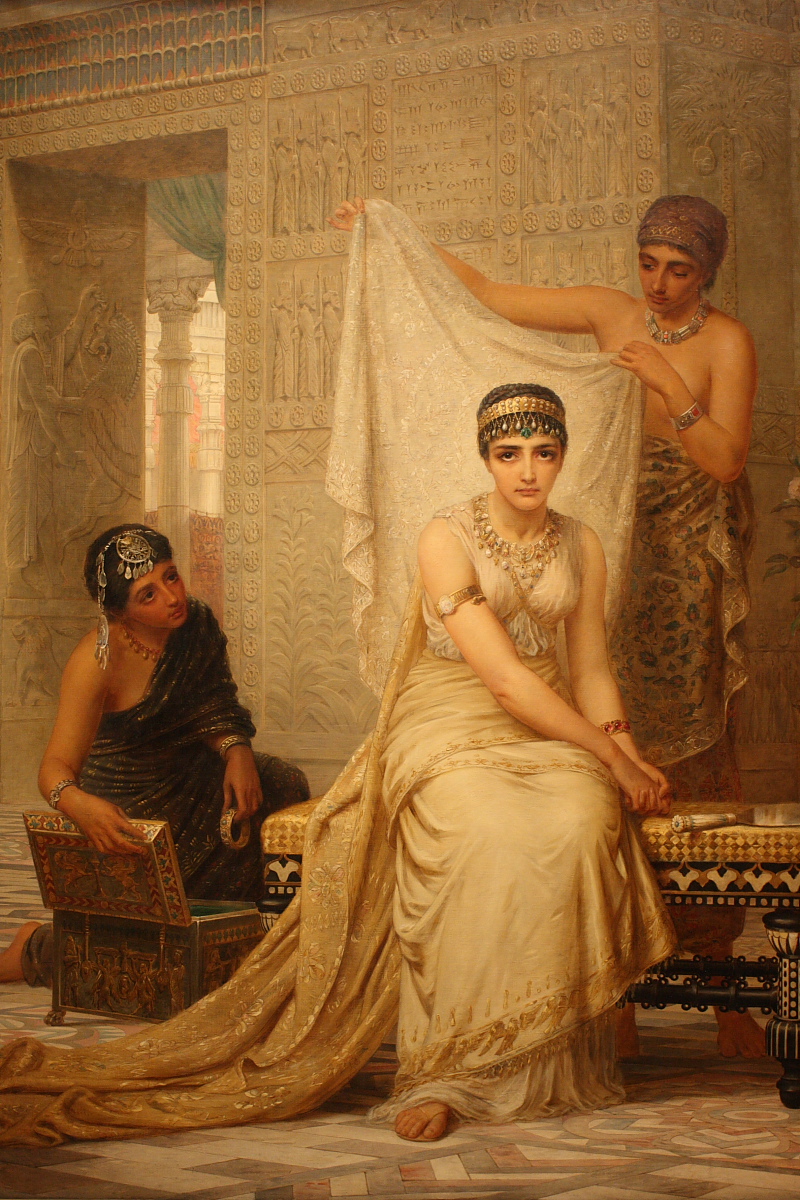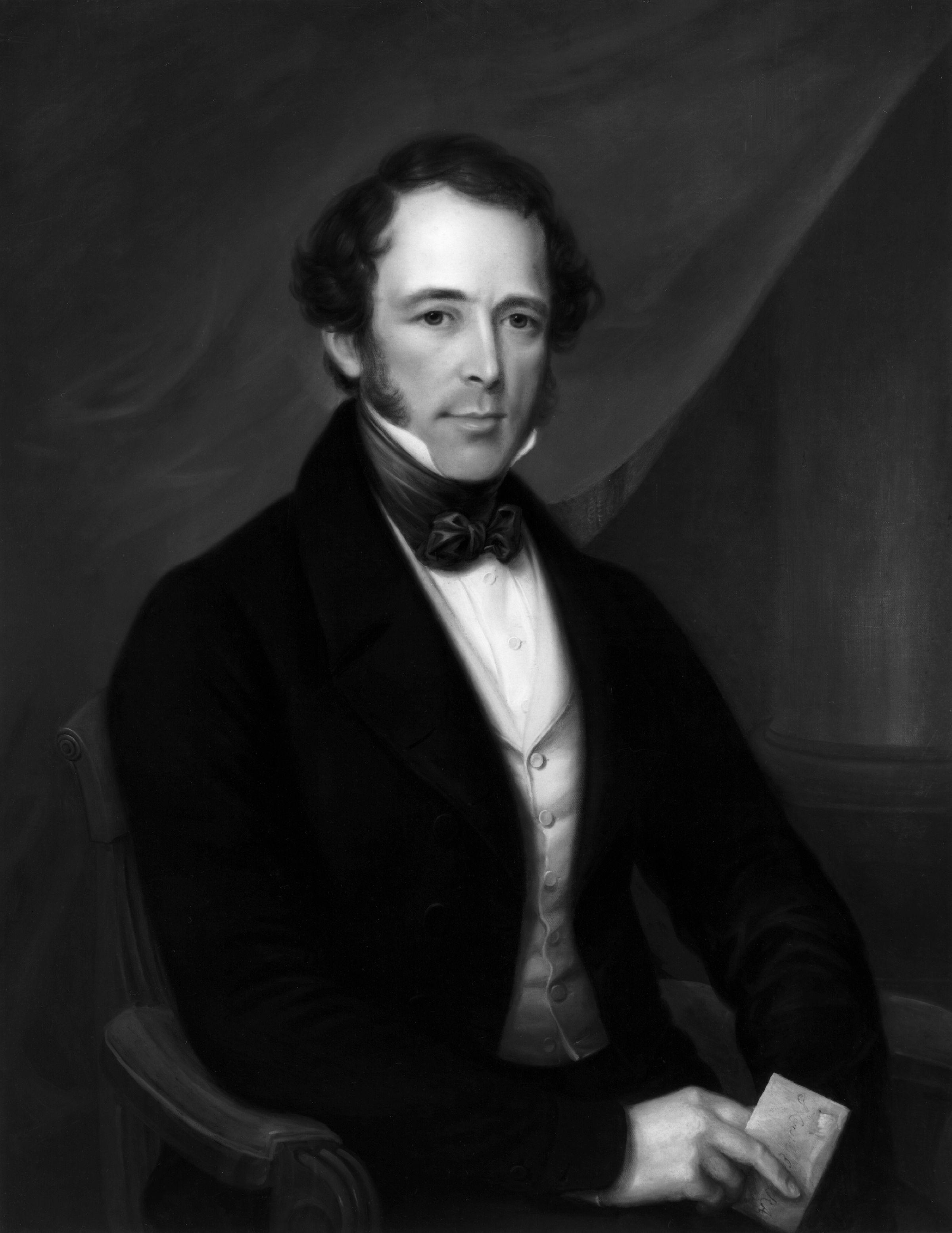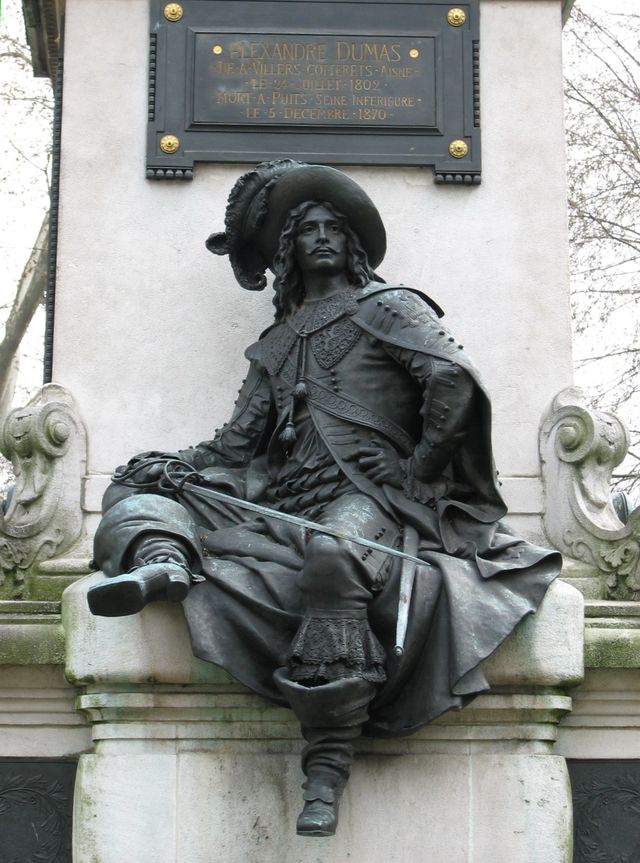|
Edwin Long
Edwin Longsden Long (12 July 1829 – 15 May 1891) was a British genre, history, biblical and portrait painter. Life and works Long was born in Bath, Somerset, the son of James Long, a hairdresser, (from Kelston in Somerset), and was educated at Dr. Viner's School in Bath. Adopting the profession of a painter, Long came to London and studied in the British Museum. He was subsequently a pupil in the school of James Mathews Leigh in Newman Street London, and practised first as a portrait artist painting Charles Greville, Lord Ebury and others. Long made the acquaintance of John Phillip RA, and accompanied him to Spain, where they spent much time. Long was greatly influenced by the paintings of Velasquez and other Spanish masters, and his earlier pictures, such as ''La Posada'' (1864) and ''Lazarilla and the Blind Beggar'' (1870), were painted under Spanish influence. His first important pictures were ''The Suppliants'' (1872) and ''The Babylonian Marriage Market'' (1875), ... [...More Info...] [...Related Items...] OR: [Wikipedia] [Google] [Baidu] |
James Mathews Leigh
James Mathews Leigh (1808 – 20 April 1860) was an English art educator, painter, writer, dramatist and critic. He is best known as the founder of a popular private art school in London known as "Leigh's Academy", which eventually became the present day Heatherley School of Fine Art. Life and work Leigh was born in London in 1808, the son of Samuel Leigh,Obituary of J. L. Leigh (The Art Journal, London, 1 July 1860) p200. a well-known bookseller who ran a shop at 18 The Strand, near the London - |
Edwin Long 002
The name Edwin means "rich friend". It comes from the Old English elements "ead" (rich, blessed) and "ƿine" (friend). The original Anglo-Saxon form is Eadƿine, which is also found for Anglo-Saxon figures. People * Edwin of Northumbria (died 632 or 633), King of Northumbria and Christian saint * Edwin (son of Edward the Elder) (died 933) * Eadwine of Sussex (died 982), King of Sussex * Eadwine of Abingdon (died 990), Abbot of Abingdon * Edwin, Earl of Mercia (died 1071), brother-in-law of Harold Godwinson (Harold II) *Edwin (director) (born 1978), Indonesian filmmaker * Edwin (musician) (born 1968), Canadian musician * Edwin Abeygunasekera, Sri Lankan Sinhala politician, member of the 1st and 2nd State Council of Ceylon * Edwin Ariyadasa (1922-2021), Sri Lankan Sinhala journalist * Edwin Austin Abbey (1852–1911) British artist * Edwin Eugene Aldrin (born 1930), although he changed it to Buzz Aldrin, American astronaut * Edwin Howard Armstrong (1890–1954), American inve ... [...More Info...] [...Related Items...] OR: [Wikipedia] [Google] [Baidu] |
Samuel Cousins
Samuel Cousins (9 May 1801 in Exeter – 7 May 1887 in London) was a British mezzotinter. Life Cousins was born at Exeter. In 1855 he was elected a full member of the Royal Academy, to which he later gave in trust £15,000 to provide annuities for superannuated artists. One of the most important figures in the history of British engraving, he died in London, unmarried, in 1887 and was buried in a family grave (no.12697) on the western side of Highgate Cemetery. Works Cousins was preeminently the interpreter of Sir Thomas Lawrence, his contemporary. During his apprenticeship to Samuel William Reynolds he engraved many of the best amongst the three hundred and sixty little mezzotints illustrating the works of Sir Joshua Reynolds which his master issued in his own name. In the finest of his numerous transcripts of Lawrence, such as ''Lady Acland and her Sons'', ''Pope Pius VII'' and ''Master Lambton'', the distinguishing characteristics of the engravers work, brilliancy and f ... [...More Info...] [...Related Items...] OR: [Wikipedia] [Google] [Baidu] |
Henry Edward Manning
Henry Edward Manning (15 July 1808 – 14 January 1892) was an English prelate of the Catholic church, and the second Archbishop of Westminster from 1865 until his death in 1892. He was ordained in the Church of England as a young man, but converted to Catholicism in the aftermath of the Gorham judgement. Early life Manning was born on 15 July 1808 at his grandfather's home, Copped Hall, Totteridge, Hertfordshire. He was the third and youngest son of William Manning, a West India merchant and prominent slave owner, who served as a director and (1812–1813) as a governor of the Bank of England and also sat in Parliament for 30 years, representing in the Tory interest Plympton Earle, Lymington, Evesham and Penryn consecutively. Manning's mother, Mary (died 1847), daughter of Henry Leroy Hunter, of Beech Hill, and sister of Sir Claudius Stephen Hunter, 1st Baronet, came of a family said to be of French extraction. Manning spent his boyhood mainly at Coombe Bank, Sundridge, ... [...More Info...] [...Related Items...] OR: [Wikipedia] [Google] [Baidu] |
National Portrait Gallery (London)
The National Portrait Gallery (NPG) is an art gallery in London housing a collection of portraits of historically important and famous British people. It was arguably the first national public gallery dedicated to portraits in the world when it opened in 1856. The gallery moved in 1896 to its current site at St Martin's Place, off Trafalgar Square, and adjoining the National Gallery (London), National Gallery. It has been expanded twice since then. The National Portrait Gallery also has regional outposts at Beningbrough Hall in Yorkshire and Montacute House in Somerset. It is unconnected to the Scottish National Portrait Gallery in Edinburgh, with which its remit overlaps. The gallery is a non-departmental public body sponsored by the Department for Digital, Culture, Media and Sport. Collection The gallery houses portraits of historically important and famous British people, selected on the basis of the significance of the sitter, not that of the artist. The collection includes ... [...More Info...] [...Related Items...] OR: [Wikipedia] [Google] [Baidu] |
Earl Of Iddesleigh
Earl of Iddesleigh ( ), in the County of Devon, is a title in the Peerage of the United Kingdom. It was created in 1885 for the Conservative politician Sir Stafford Northcote, 8th Baronet, of Pynes in the parish of Upton Pyne near Exeter in Devon and lord of the manor of Iddesleigh, 28 miles north-west of Pynes. He served as President of the Board of Trade, Secretary of State for India, Chancellor of the Exchequer, First Lord of the Treasury and Foreign Secretary and was Joint Leader of the Conservative Party from 1881 to 1885. Northcote was made Viscount St Cyres, of Newton Saint Cyres in the County of Devon, at the same time he was given the earldom. This title is also in the Peerage of the United Kingdom. He was succeeded by his eldest son, the second Earl. He notably served as Chairman of the Board of Inland Revenue, and a Justice of the peace and deputy lieutenant in Devonshire. On his death the titles passed to his nephew, the third Earl. He was the youngest son of J ... [...More Info...] [...Related Items...] OR: [Wikipedia] [Google] [Baidu] |
Henry Irving
Sir Henry Irving (6 February 1838 – 13 October 1905), christened John Henry Brodribb, sometimes known as J. H. Irving, was an English stage actor in the Victorian era, known as an actor-manager because he took complete responsibility (supervision of sets, lighting, direction, casting, as well as playing the leading roles) for season after season at the West End’s Lyceum Theatre, establishing himself and his company as representative of English classical theatre. In 1895 he became the first actor to be awarded a knighthood, indicating full acceptance into the higher circles of British society. Life and career Irving was born to a working-class family in Keinton Mandeville in the county of Somerset. W.H. Davies, the celebrated poet, was a cousin. Irving spent his childhood living with his aunt, Mrs Penberthy, at Halsetown in Cornwall. He competed in a recitation contest at a local Methodist chapel where he was beaten by William Curnow, later the editor of ''The Sydn ... [...More Info...] [...Related Items...] OR: [Wikipedia] [Google] [Baidu] |
Angela Burdett-Coutts, 1st Baroness Burdett-Coutts
Angela Georgina Burdett-Coutts, 1st Baroness Burdett-Coutts (21 April 1814 – 30 December 1906), born Angela Georgina Burdett, was a British philanthropist, the daughter of Sir Francis Burdett, 5th Baronet and Sophia, formerly Coutts, daughter of banker Thomas Coutts. In 1837 she became one of the wealthiest women in England when she inherited her grandfather's fortune of around £1.8 million () following the death of her stepgrandmother, Harriot Beauclerk, Duchess of St Albans. She joined the surnames of her father and grandfather, by royal licence, to become Burdett-Coutts. Edward VII is reported to have described her as, " ter my mother, the most remarkable woman in the kingdom." Life Burdett-Coutts was widely known as "the richest heiress in England". She was a collector of paintings, including Old Masters. Among the contemporary paintings she purchased was Robert Scott Lauder's ''Christ Walking on the Sea''. The Reverend Richard Harris Barham, in a ballad (part of t ... [...More Info...] [...Related Items...] OR: [Wikipedia] [Google] [Baidu] |
New Bond Street
Bond Street in the West End of London links Piccadilly in the south to Oxford Street in the north. Since the 18th century the street has housed many prestigious and upmarket fashion retailers. The southern section is Old Bond Street and the longer northern section New Bond Street—a distinction not generally made in everyday usage. The street was built on fields surrounding Clarendon House on Piccadilly, which were developed by Sir Thomas Bond, 1st Baronet, Sir Thomas Bond. It was built up in the 1720s, and by the end of the 18th century was a popular place for the upper-class residents of Mayfair to socialise. Prestigious or expensive shops were established along the street, but it declined as a centre of social activity in the 19th century, although it held its reputation as a fashionable place for retail, and is home to the auction houses Sotheby's and Bonhams (formerly Phillips (auctioneers), Phillips) and the department store Fenwick (department store), Fenwick and jewel ... [...More Info...] [...Related Items...] OR: [Wikipedia] [Google] [Baidu] |
Gustave Doré
Paul Gustave Louis Christophe Doré ( , , ; 6 January 1832 – 23 January 1883) was a French artist, as a printmaker, illustrator, painter, comics artist, caricaturist, and sculptor. He is best known for his prolific output of wood-engravings, especially those illustrating classic books, including 241 illustrating the Bible. These achieved great international success, and he is the best-known artist in this printmaking technique, although his role was normally as the designer only; at the height of his career some 40 block-cutters were employed to cut his drawings onto the wooden printing blocks, usually also signing the image. In all he created some 10,000 illustrations, the most important of which were "duplicated in electrotype shells that were printed ... on cylinder presses", allowing very large print runs as steel engravings, "hypnotizing the widest public ever captured by a major illustrator", and being published simultaneously in many countries. The drawings given to ... [...More Info...] [...Related Items...] OR: [Wikipedia] [Google] [Baidu] |
Burgos
Burgos () is a city in Spain located in the autonomous community of Castile and León. It is the capital and most populated municipality of the province of Burgos. Burgos is situated in the north of the Iberian Peninsula, on the confluence of the Arlanzón river tributaries, at the edge of the central plateau. The municipality has a population of about 180,000 inhabitants. The Camino de Santiago runs through Burgos. Founded in 884 by the second Count of Castile, Diego Rodríguez Porcelos, Burgos soon became the leading city of the embryonic County of Castile. The 11th century chieftain Rodrigo Díaz de Vivar (''El Cid'') had connections with the city: born near Burgos, he was raised and educated there. In a long-lasting decline from the 17th century, Burgos became the headquarters of the Francoist proto-government (1936-1939) following the start of the Spanish Civil War. Declared in 1964 as Pole of Industrial Promotion and in 1969 as Pole of Industrial Development, the city h ... [...More Info...] [...Related Items...] OR: [Wikipedia] [Google] [Baidu] |
Hampstead Cemetery
Hampstead Cemetery is a historic cemetery in West Hampstead, London, located at the upper extremity of the NW6 district. Despite the name, the cemetery is three-quarters of a mile from Hampstead Village, and bears a different postcode. It is jointly managed by Islington and Camden Cemetery Service and opens seven days a week, with closing times varying throughout the year. Location and history Hampstead Cemetery is situated on Fortune Green Road and is bordered on the northern side by the sports ground of University College School. A public footpath running from Hocroft Road to Fortune Green runs through the cemetery, effectively splitting it in two. Hampstead Cemetery was consecrated by the Bishop of London and opened in November 1876. The entire site covers , and an estimated 60,000 people are buried there. While there are no new grave spaces available, there is an area for cremated remains to the north of the cemetery, by the Fortune Green Road exit. The cemetery has a p ... [...More Info...] [...Related Items...] OR: [Wikipedia] [Google] [Baidu] |










